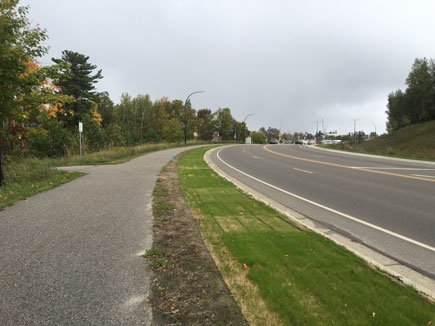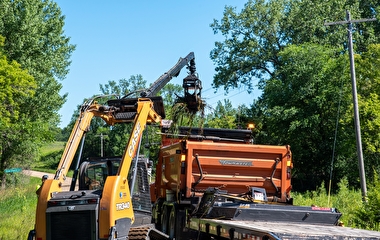Minnesota roadsides account for more than 245,000 acres of established vegetation. This vegetation, often in the form of turfgrass, helps prevent erosion and keeps contaminants from reaching ground and surface waters, but harsh conditions can make it difficult for turfgrass to thrive.
For nearly a decade, University of Minnesota researchers have been working to improve the health and performance of roadside turfgrasses in Minnesota, focusing mainly on salt tolerance and watering needs for select turfgrass species. In their latest project, funded by the Minnesota Department of Transportation (MnDOT) and the Minnesota Local Road Research Board, researchers focused on identifying grasses that can perform best in the face of three significant stressors: salt, heat, and ice.
Led by Eric Watkins, a professor in the Department of Horticultural Science, the research team aimed to create recommendations for species that perform best under these multiple, combined stressors. Ultimately, the most successful cultivars could be included in mixtures of multiple species to optimize performance under all conditions.
“We need to use the best genetics along the roadside as possible,” Watkins says. “Using the right variety of turfgrasses improves the chances of success and can save a lot of money for public agencies.”
The researchers began by conducting a literature search to identify promising turfgrass species for harsh environments; then, they contacted seed companies for further recommendations before requesting seeds for multiple cultivars.
In total, Watkins and his team tested varieties from 15 turfgrass species in salt, heat, and ice stress protocols. Based on the results, the team developed a variety of recommendations for MnDOT guidelines on salt- and heat-resistant turfgrasses; tests related to ice-resistant cultivars were inconclusive.
Overall, study findings suggest that a mixture of turfgrass varieties and species will likely be the best solution for year-round use in Minnesota, since no single cultivar performed well in every trial. With this in mind, the researchers recommended a mixture of cultivars for field studies, which began last year as part of a second phase of this research.
“We identified a selection of new cultivars that are suitable for use on harsh roadsides,” says Dwayne Stenlund, senior natural resource program coordinator at MnDOT’s Office of Environmental Stewardship. “We are trying to build a mixture diverse enough to outlast all stressors, and this study identified the cultivars we should try.”
In phase two, researchers are using a mixture of six species selected from this study: Kentucky bluegrass, slender creeping red fescue, hard fescue, buffalograss, alkaligrass, and tall fescue. Mixtures are being planted in different combinations on roadsides across the state for evaluation. In the meantime, MnDOT is adjusting its current seed mixture recommendations based on the results of this and other studies.




